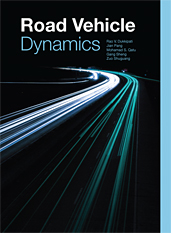Technical Paper
Torsional Vibration Modeling of Driveline System for EV Low-Frequency Flutter
2015-06-15
2015-01-2191
In view of the problem of low-frequency (less than 10Hz, such as 0.5Hz, 1.15Hz, 8Hz in this paper) longitudinal vibration exists in a pure electric vehicle, modeling methods of drive-line torsion vibration system are conducted. Firstly, dynamometer test is performed, signals of motor speed and seat rail acceleration are obtained, the frequency characteristics of flutter is determined using the order analysis and time frequency analysis. Then four types of modeling and analysis are investigated facing the drive-line torsion vibration problem, including single model without electromagnetic stiffness, branch model without electromagnetic stiffness, single model considering electromagnetic stiffness and branch model considering electromagnetic stiffness. The results show that, modeling taking into account the electromagnetic stiffness and branches can reflect more low-frequency characteristics helps to reveal the low-frequency longitudinal flutter of the researched electric vehicle.


